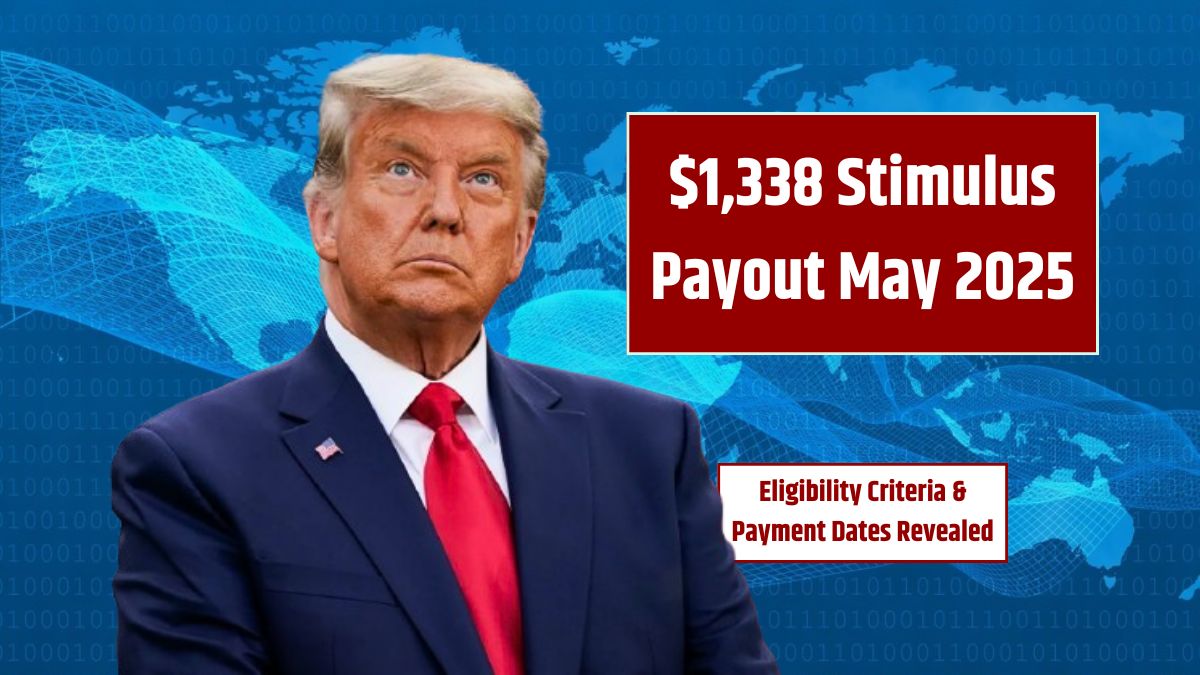The government may be gearing up to send out another round of stimulus checks—this time for $1338. With inflation biting and families still catching up from past economic shocks, this payout could be a welcome relief. But what do we actually know so far? Let’s walk through who may qualify, when you might see the money, and how to track your payment.
Overview
The proposed $1338 stimulus check is still under discussion in Washington, but it’s already generating a lot of buzz. The idea behind this payment is to help Americans cope with high living costs and stimulate spending to support the economy. If approved, the checks could go out as early as May 2025.
This wouldn’t be the first time something like this has happened. Similar to the COVID-19 Economic Impact Payments, this new stimulus is expected to follow a pattern—eligibility based on income, filing status, and residency.
Eligibility
Let’s talk about who might get the full $1338 and who might get a reduced amount—or nothing at all.
Income Limits
Eligibility will almost certainly be tied to your income. Here’s a rough idea based on previous stimulus payments:
| Filing Status | Full Payment Threshold | Phase-Out Begins | Not Eligible Above |
|---|---|---|---|
| Single | $75,000 | $75,001 | ~$100,000 |
| Married Jointly | $150,000 | $150,001 | ~$200,000 |
| Head of Household | $112,500 | $112,501 | ~$150,000 |
If you’re under the threshold, congrats—you may get the full amount. If you’re above it, your payment could be reduced or phased out entirely.
Filing Status and Dependents
Your filing status matters, too. If you’re married and file jointly, you could get double—up to $2676 if both qualify. Heads of household may also receive slightly more depending on the number of dependents they claim.
Residency and ID
You’ll need to be a U.S. citizen or permanent resident and have a valid Social Security Number. If you’re undocumented or lack a valid SSN, you unfortunately won’t qualify.
Tracking
Once the IRS finalizes the plan, here’s how to stay in the loop.
IRS Website
The IRS will likely launch a status tool just like they did before. This handy online portal lets you check when your check is coming, how it’s being sent, and what to do if there’s a delay.
Direct Deposit or Paper Check
If you’ve set up direct deposit with the IRS through previous tax returns, your payment should land directly in your bank account. If not, watch your mailbox for a paper check.
Ask a Tax Pro
Tax professionals will be tracking updates in real time. If your situation is complicated—say you’re self-employed or haven’t filed recently—it’s worth giving your tax advisor a call.
Impact
So, what difference does $1338 make? For many, it could cover rent, groceries, or debt payments. Beyond helping individuals, stimulus payments are designed to pump money into the economy. When people spend those checks, businesses see more revenue, which helps keep jobs and services going strong.
In past stimulus rounds, people used the money for everything from groceries to saving for emergencies. It might be temporary, but it can be a crucial financial lifeline when things are tight.
Concerns
You might not get the full amount if your income is higher than the threshold. Payments are reduced as income increases.
Self-Employed?
You’re in luck—as long as you meet the requirements, you’re eligible too. Just make sure your taxes are up to date.
Haven’t Filed?
If you didn’t file taxes recently, you may still qualify by filling out a non-filer form through the IRS. Don’t miss out just because you skipped a return.
The $1338 stimulus payout could offer a much-needed break for families and individuals facing financial stress. If it’s approved, make sure you’re ready—check your eligibility, file your taxes, and keep an eye on IRS updates. It’s not just a check—it could be a bridge to help you stay afloat.
FAQs
Who is eligible for the $1338 payment?
Eligibility depends on income, filing status, and residency.
When will the $1338 stimulus be sent?
It’s tentatively scheduled for May 2025, pending approval.
Can I get the check if I’m self-employed?
Yes, as long as you meet income and filing requirements.
What if I haven’t filed taxes recently?
You may need to file a non-filer form with the IRS.
How can I track my stimulus check?
Use the IRS ‘Get My Payment’ tool when it’s available.
